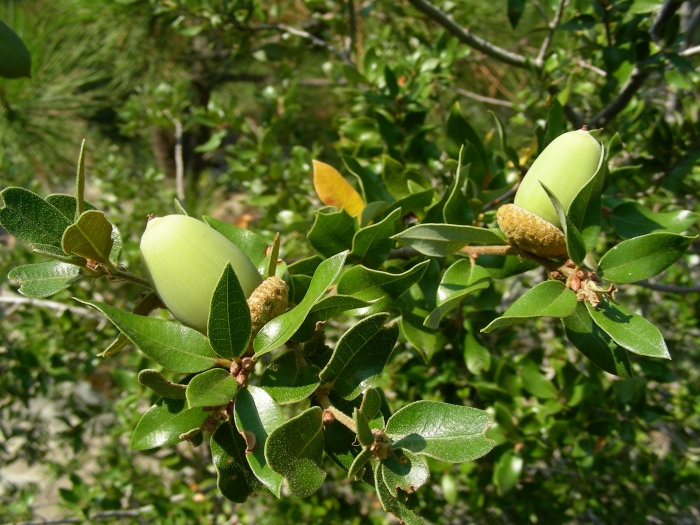Canyon Live Oak
(Quercus chrysolepis)
Canyon Live Oak (Quercus chrysolepis)
/
/

Doug Beckers on Flickr
CC BY-SA 2.0
























































Estimated Native Range
Summary
Canyon Live Oak is valued for its adaptability to various soil types, including rocky or cobbly environments, and its hardiness to cold temperatures down to −11 °F. It thrives in neutral to moderately acidic soils with pH ranges of 4.5 to 7.5. In cultivation, it is best suited to full sun and requires medium amounts of water with medium or fast drainage. This oak is often used in naturalistic plantings and as a shade tree in large landscapes due to its picturesque form and evergreen foliage. It is also important for wildlife habitat, providing food and shelter for various species. However, gardeners should be aware of its potential to grow large and consider space requirements accordingly.CC BY-SA 4.0
Plant Description
- Plant Type: Trees
- Height: 30-80 feet
- Width: 30-60 feet
- Growth Rate: Slow
- Flower Color: N/A
- Flowering Season: Spring
- Leaf Retention: Evergreen
Growth Requirements
- Sun: Full Sun, Part Shade
- Water: Low, Medium
- Drainage: Fast, Medium
Common Uses
Bee Garden, Bird Garden, Butterfly Garden, Deer Resistant, Drought Tolerant, Edible*Disclaimer: Easyscape's listed plant edibility is for informational use. Always verify the safety and proper identification of any plant before consumption., Erosion Control, Fire Resistant, Low Maintenance, Rabbit Resistant
Natural Habitat
Chaparral and woodlands of the Southwestern USA and Baja California, Mexico
Other Names
Common Names: Canyon Oak , Golden Cup Oak , Maul Oak
Scientific Names: Quercus chrysolepis , Quercus chrysolepis var. nana , Quercus chrysolepis var. chrysolepis , Quercus chrysolepis var. hansenii , Quercus wilcoxii , Quercus crassipocula , Quercus chrysolepis f. grandis , Quercus chrysolepis f. nana , Quercus chrysolepis var. pendula , Quercus chrysolepis f. hansenii
GBIF Accepted Name: Quercus chrysolepis Liebm.